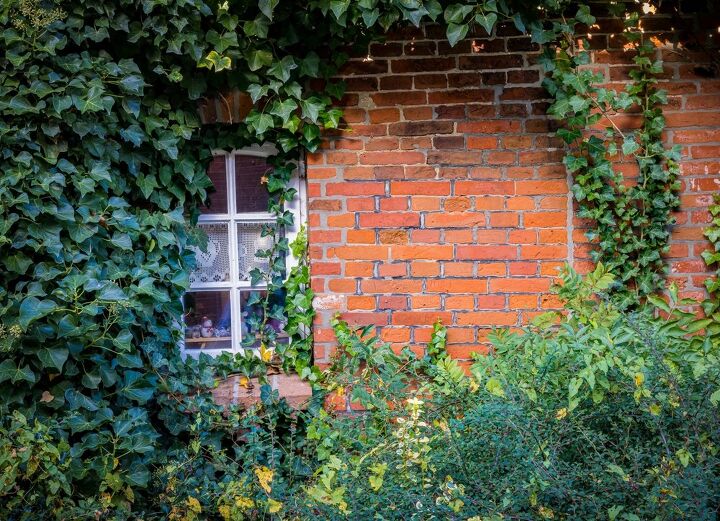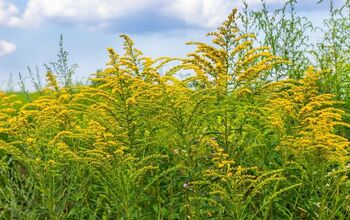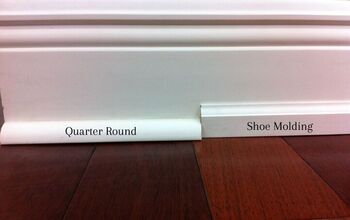Invasive Species You Should Never Plant In Your Yard

If you are working on a home garden, then you know there are endless species of plants to choose from and just as many aesthetics you can hope to achieve. You might already have some plants growing in your garden, or perhaps you have a few plants in mind that you want to introduce to your yard. But make sure that before you bring in a new plant to your garden, you are certain it is not invasive, as there are tons of invasive species out there. Some of them you might not even know are invasive until it’s too late.
Some popular plants that are actually invasive include Chinese wisteria, English ivy, the common daylily, and certain types of honeysuckle. Sweet autumn clematis, kudzu vine, common periwinkle, and winter creeper are all creeping plants that are invasive and can take over your garden. Other invasive plants to avoid include ajuga, burning bush, butterfly bush, and golden bamboo, as they can grow out of control and can be difficult to control.
It is important you know what species are invasive. Invasive plants often grow out of control and completely consume your yard. They can also be bad for the ecosystem, as they drive away other plants, which in turn will force certain animals out as well. They can even make their way into cracks in your foundation and onto the walls of your home. This can result in some major damage to your home, so knowing what plants are invasive and which aren’t is critical.
1. Common Daylily
Lilies are often some of the most beautiful flowers in a garden. Daylilies are certainly a pretty type of lily, and it can be tempting to want to introduce them to your garden. Unfortunately, these attractive blooming plants can often cause more harm than good, especially if you live near natural land. Daylilys can spread quickly and push out native species. They are also hearty and dense plants, so they can be difficult to control once they have established themselves.
2. Chinese Wisteria
Another stunning plant that you might be shocked to learn is invasive is Chinese wisteria. Wisteria is often considered a great vine to grow on a pergola or trellis, as it is long-lasting and produces stunning hanging flowers. Unfortunately, the Chinese variety of this plant can grow out of control and even damage your home. These plants root into the cracks of your home, and can even strangle whatever they latch themselves to. It is best to opt for less aggressive forms of wisteria.
3. Butterfly Bush
With a name like butterfly bush, it can be hard to say no to this plant. They do, after all, attract butterflies with their stalking blossoms. Unfortunately, they also tend to grow out of control. This invasive species can drive away native species and is difficult to keep in line, making gardening more challenging. Luckily, there are plenty of other plants that butterflies love.
4. Burning Bush
Burning bush is on nearly every list of invasive plants you should never plant in your home garden. This bush may produce some pretty red-colored leaves, but it also grows quickly and produces tons of far-reaching seeds. Because of this, these plants can multiply all over the area quite quickly, which makes them harmful to the entire surrounding area.
5. Princess Tree
Vines, flowers, and bushes might be the most common invasive species offenders, but some trees are also invasive. One such tree is the princess tree. While this tree has a lovely name, it can have some not-so-pleasant repercussions if you plant it in your yard. This tree can colonize and completely take over areas near where it has been planted, so if you want to keep the area around your flowering tree pristine, avoid the princess tree.
6. Winter Creeper
It can be tempting to plant winter creeper, as it can quickly provide rather attractive ground cover. But you should avoid planting this species because it is very aggressive and difficult to control. It spreads quickly over the ground and has a tendency to swallow all other low-lying plant species in its path, which is harmful to your yard and ecosystem.
7. English Ivy
With a name as distinguished as English ivy, you would think this plant is desirable. In fact, this is one species you should probably avoid in your garden due to its invasive and aggressive nature. What is particularly dangerous about this species is that it not only threatens low-lying plants, but it can even crawl into tree canopies and take over taller species.
8. Morrow’s Honeysuckle
If you want a sweet-smelling creeping plant, honeysuckle is an obvious choice. But when you select your specific species of honeysuckle, be very careful as some honeysuckle species can be rather harmful. Morrow’s honeysuckle is found in America and can be quite invasive. Japanese honeysuckle is also known to be very invasive, so avoid both.
9. Ajuga
Ajuga comes in several variations and is often referred to as bugleweed. Regardless of the name it goes by or the way it looks, you should avoid planting it in your garden. This purple-flowered plant will spread very quickly, take over your entire flowerbed, and even creep onto your grass. So, it is best not to plant this invasive species in your yard.
10. Sweet Autumn Clematis
Clematis is known to be a stunning flowering plant that can climb and grow over trellises and provide beautiful living backdrops. If you are looking to plant clematis, however, be careful with the species you plant, as some are aggressive and invasive. Perhaps the most invasive species of clematis is the sweet autumn clematis. While beautiful, this species is very aggressive and persistent, which is why it is classified as an invasive species.
11. Maiden Silvergass
Some decorative grasses are also quite invasive. In fact, grasses can be the most invasive species of all. Maiden silvergrass is a great example of a type of grass that might look lovely at first but can quickly take over your yard. This grass might be decorative, but it can spread rapidly and is not easy to contain.
12. Golden Bamboo
Bamboo has many uses, and it can make an otherwise banal backyard seem exotic and chic. But golden bamboo is a great example of “too much of a good thing.” Golden bamboo is very hearty, which at first glance might make it a good option in cooler places where bamboo does not thrive as well. But this species is so hearty that it often out-competes the surrounding species.
13. Kudzu Vine
If you have ever seen kudzu vine growing in the wild, you likely are not shocked that this species is invasive. This vine can literally take over a forest. It will grow over giant trees, and blanket an entire forest. While this might seem exciting and exotic, it can also kill and destroy plants and trees in your yard in the process.
14. Common Periwinkle
Periwinkle is known for its blue and purple flowers. It can be quite pretty, but some of these blue flowering plants can have ugly consequences. The common periwinkle is considered an invasive species. It has historically been used as ground cover as it provides signature purplish blooms and quickly covers the ground. But as a result, this aggressive and hearty species can push out all sorts of native plants in the process.
15. Japanese Barberry
Lastly, Japanese barberry is one invasive species you should definitely watch out for. This plant might not be native to North America, but it is aggressive and has inserted itself in this country. Avoid planting this bush, as it can grow wide and tall, and like other invasive species, it can push out native species as it expands.
Concluding Invasive Species You Shouldn’t Plant In Your Yard
Invasive species can cause lots of headaches, and even disrupt your entire local ecosystem. These plants can take over your yard and push out more desirable plants, so it is best to avoid planting them in your yard. Chinese wisteria, English ivy, certain types of honeysuckle, bamboo, and periwinkle are quite invasive and should be avoided. Remember that some beautiful flowering plants, like daylilies, and even trees, like the princess tree, can also be invasive.
Related Guides:

Tom Gaffey is an expert writer who currently resides in Washington D.C. Tom has a passion for real estate and home improvement writing, as well as travel and lifestyle writing. He lived the last twelve years in Hawaii where he worked closely with luxury resorts and event planners, mastering his knowledge of aesthetics and luxury products. This is where he found his passion for home improvement and a keen interest in DIY projects. Currently, Tom resides in Washington D.C, and also working on his debut fiction novel.
More by Tom Gaffey















![12 Washing Machine Brands to Avoid [with Recall Data]](https://cdn-fastly.upgradedhome.com/media/2023/07/31/9075781/12-washing-machine-brands-to-avoid-with-recall-data.jpg?size=350x220)











